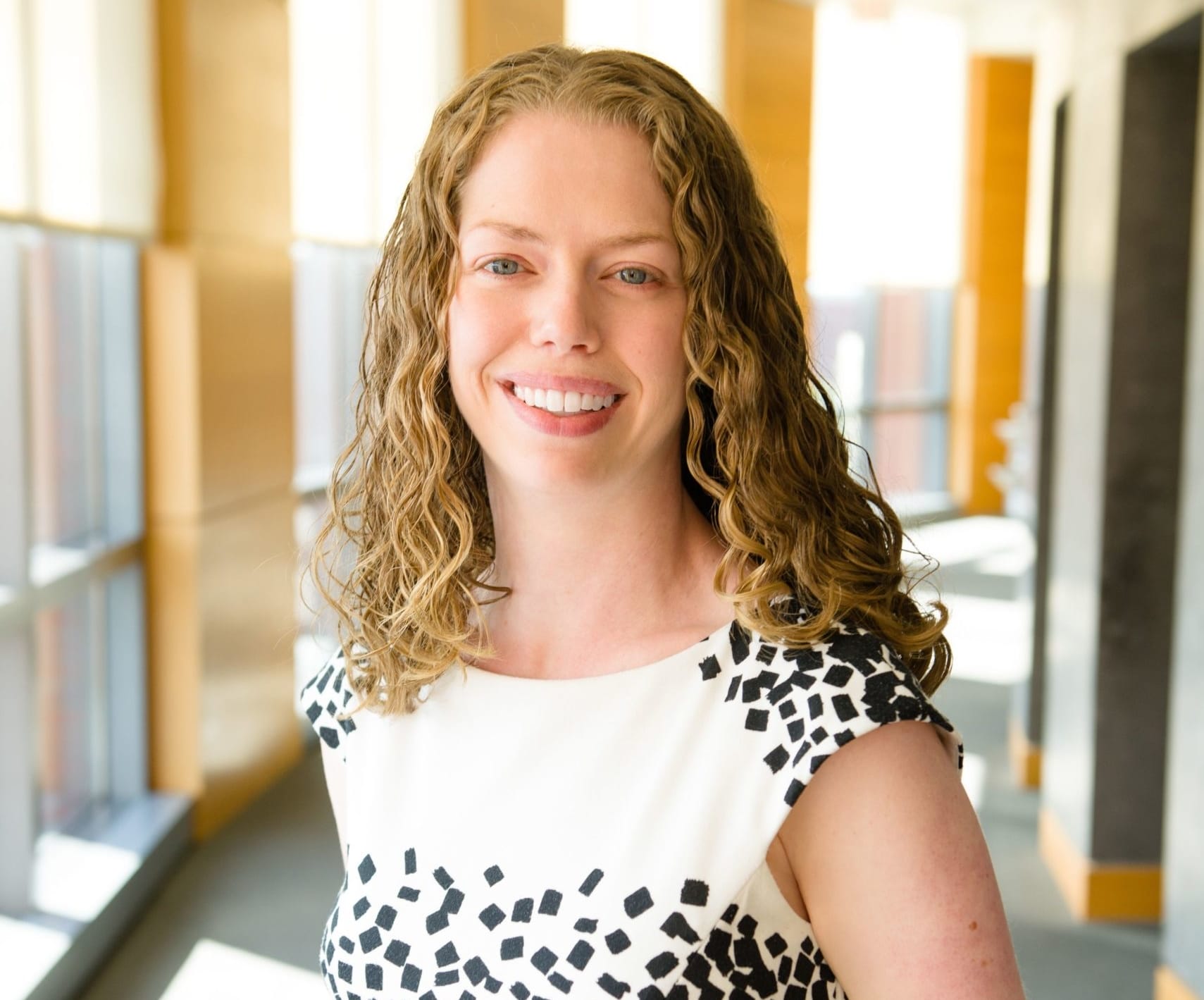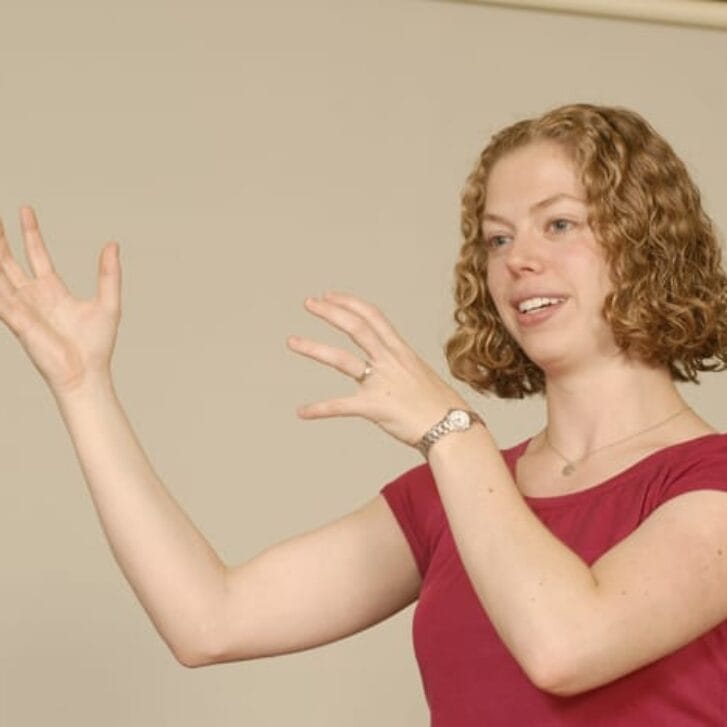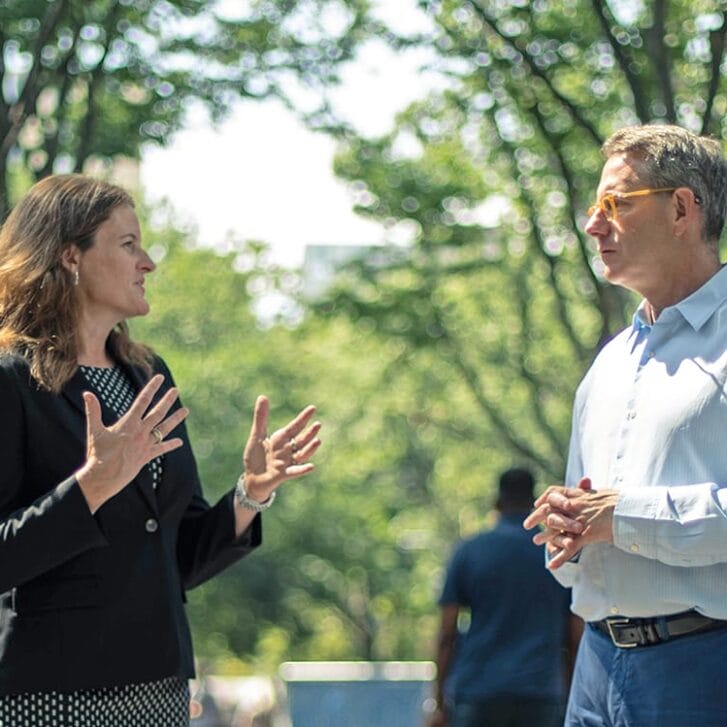If you’ve ever tried to change or encourage it in the people you manage, you know how hard it is. There are countless resources that aim to help — to boost productivity, exercise, healthy eating, or savings. But chances are, you’re still not where you want to be. In How to Change: The Science of Getting from Where You Are to Where You Want to Be, Wharton’s James G. Dinan Professor and Behavior Change for Good Initiative co-director Katy Milkman explains why. The crucial thing that many of us get wrong? Our strategy. Change, Milkman has learned, comes most readily when you understand what’s standing between you and success and tailor your solution to that roadblock. In this Q&A, she discusses her book and the science of change.
What was your path to dissecting how our daily decisions affect our prosperity and our happiness, ultimately leading you to study how people change their behaviors?
Initially, I did a lot of what I like to call “me-search” — studying topics that related to my personal foibles. But that all changed about a decade ago when I saw a pie chart that kept me up at night for weeks afterward. The chart broke down the most common causes of premature death in the United States. And it showed that roughly 40 percent of premature deaths are the result of personal behaviors we can change — seemingly small daily decisions about eating, drinking, exercise, smoking, sex, and vehicle safety. They add up, producing hundreds of thousands of fatal cancers, heart attacks, and accidents each year. I’ve never seen a similar breakdown of how our daily decisions accumulate when it comes to productivity, happiness, savings, or educational outcomes, but it’s easy to guess that it’s not just health where the little things pile up fast. Recognizing that my research on behavior change could potentially make a real dent in such meaningful problems has fueled me ever since.
If you can’t persuade people to alter their behavior by telling them that change is simple, cheap, and good for them, what magical ingredient will do the trick?
I have many answers to that question, but the most important is “It depends.” The surest path to success is not one size-fits-all. When policymakers, organizations, or scientists apply a one-size-fits-all strategy to change behavior, the results are mixed. But when they start by asking what stands in the way of progress — say, why their employees aren’t saving enough money or getting flu shots — and then develop targeted strategies to change behavior, the results tend to be far better.
The obstacles to change are highly variable. Your obstacle might be forgetfulness, or a lack of confidence, or a desire to take the path of least resistance, or the tendency to succumb to temptation. And we sometimes face more than just one obstacle. But whatever the challenge, identifying it and developing a tailored strategy to surmount it is key. My book is organized to help readers do just that. Each chapter highlights a common obstacle to change and shares the strategies that science has proven are most effective for toppling that particular challenge.
What work did you do with Google to develop tools for nudging better decisions and productivity? What did you discover?
After a visit to the company’s headquarters, I saw an opportunity to help encourage Google employees to build more stable exercise habits. I pitched a low-cost strategy that I and my longtime collaborator, Harvard Business School professor John Beshears, were convinced could work.
John and I suspected that visiting the gym or building any other habit in a very consistent way — always at the same time on a strict routine — would produce more lasting behavior change than exercising less consistently even at the same frequency. To test this, we ran a study with collaborators measuring more than 2,500 Googlers’ attendance at on-site gyms during a month when we offered them rewards for exercise and for roughly 40 weeks thereafter. At the outset, participants told us the time when it was most convenient for them to exercise. And some employees were paid for exercising at that same time each day, while others were paid a bit less for exercising anytime.
When the data came back, we were startled by what we learned. The Googlers we’d encouraged to hit the gym at a consistent time essentially built a habit around exercising only at that precise time. We had accidentally turned them into inflexible automatons. If they couldn’t make it to the gym at their regular time, they were unlikely to go at all, either during or after our experiment. But both during and after our study, the employees we’d rewarded for exercising on a more flexible schedule kept working out more at other times, too, not just at the time they’d identified as most convenient. They had very clearly learned how to get to the gym even when their original plans fell through, and overall, that produced a “stickier” exercise habit.
I think this is one of the most important discoveries I’ve made in my research career. Forming stable routines helps build habits, but if we want to form the “stickiest” possible habits, we need to learn how to roll with the punches so we can be flexible when life throws us a curveball. Too much rigidity is the enemy of a good habit.
You write about how timing is critically important to change — people are more open to changing when they feel they have a fresh start. Besides New Year’s, what are other moments that inspire new beginnings?
Surveys show that new beginnings offer a kind of psychological “do-over”: People feel distanced from their past failures; they feel like a different person with reason to be optimistic about the future.
My research with UCLA professor Hengchen Dai GRW15 who was my PhD advisee at Wharton once upon a time — and Wharton Senior Fellow Jason Riis has shown that people are more likely to pursue change on dates that feel like new beginnings. Undergraduates are more likely to visit the gym not only in January, but also earlier in the week, after a school holiday, at the beginning of a new semester, and after their birthdays — except after 21st birthdays, and I’ll let you guess why. We also found an uptick in online goal setting and in “diet” searches on Google in January, on Mondays, and after holiday breaks, and people’s birthdays were linked with more goal-setting, too. Anecdotally, we also know that meaningful life moments, such as getting over a major illness, moving to a new city, becoming a parent, or even just getting a radical new haircut, can spur change.
The one tricky thing to keep in mind is that not everyone benefits from a fresh start. While fresh starts are helpful for kick-starting change, they can also be unwelcome disrupters of well-functioning routines. Anyone seeking to maintain good habits should beware.
How is forgetfulness the silent killer of our goals? How do we overcome flaking out?
In a classic study from 1885, German psychologist Hermann Ebbinghaus estimated that we forget nearly half of the new information we’ve attempted to store in memory within 20 minutes. One obvious way to overcome forgetting is to create reminders. And if you can arrange to schedule a reminder that will appear at the very moment when you should act, do so posthaste. But unfortunately, unless a reminder comes at that precise moment when you need to follow through, you’re likely to forget again.
When you can’t time a reminder perfectly, you can help yourself remember by forming a detailed plan with a cue to act. It’s as simple as filling in the blanks in the sentence “When ___ happens, I’ll do ___.” Often when we make plans, we don’t focus on what will trigger us to act. Instead, we focus on what we intend to do. For instance, a typical plan to improve oral hygiene might be: “I’m going to start flossing more.” But research shows it’s vital to link that intention with a cue, like a specific time, place, or action, so the cue will jog your memory. If you want to floss more regularly, a helpful tweak to your plan would be to say, “Every night after brushing my teeth, I’m going to floss.” My collaborators and I have proven that simply prompting employees to form these kinds of concrete, cue-based plans for getting vaccinated at a workplace flu-shot clinic can significantly and costlessly increase the rate at which employees get inoculated.
What do you hope readers take away from your book?
My hope is that How to Change will help readers better understand what’s standing in their way at work and at home and how to overcome it. The book uses cutting-edge scientific research to offer solutions to the most common internal barriers to change. If readers leave with just one takeaway, I hope it will be that one-size-fits-all strategies don’t work nearly as well as tailored attacks if you want to achieve your biggest goals.
Published as “The Change Agent’s Handbook” in the Spring/Summer 2021 issue of Wharton Magazine.


























